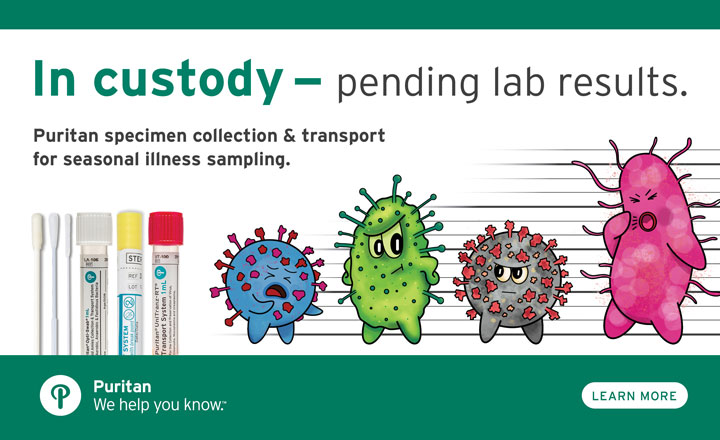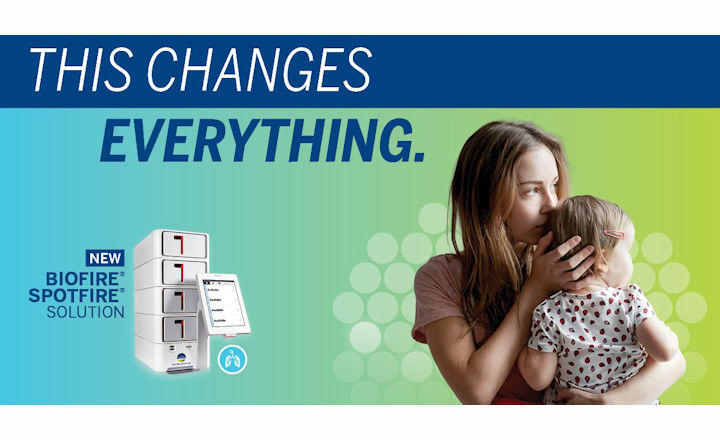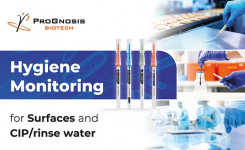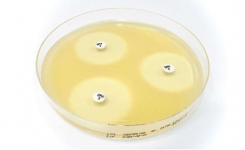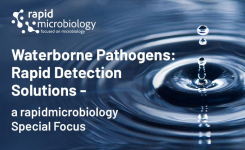Quidel Corporation has received 510(k) clearance from the FDA to market its Solana Bordetella Complete Assay, a molecular diagnostic assay to be used with the Solana molecular diagnostic instrument for the qualitative detection and differentiation of Bordetella pertussis and Bordetella parapertussis nucleic acids isolated from nasopharyngeal swab specimens obtained from patients suspected of having a respiratory tract infection attributable to Bordetella pertussis and Bordetella parapertussis.
Pertussis, or whooping cough, is a very contagious disease caused by the Bordetella pertussis bacteria, which attach to the cilia that line part of the upper respiratory tract, causing inflammation through the release of toxins, which cause airways to swell.1 Pertussis is spread from person to person through the inhalation of bacteria from an infected person’s cough or sneeze. Symptoms, such as a runny nose, low-grade fever, or mild cough usually develop within 5–10 days after exposure, but sometimes appear as long as 3 weeks later. Although whooping cough can cause serious illness in children and adults, it is most dangerous for infants and babies. According to the Centers for Disease Control and Prevention (CDC), about half of infants younger than 1 year of age who get this disease require hospitalization.2
The incidence of pertussis has risen steadily over the last few years.3 Factors that have likely contributed to the increased incidence of pertussis include a decline in vaccine use, waning vaccine-induced immunity in adolescent and adult populations, failure to receive booster shots later in life, and continued circulation of B. pertussis in our population.4-5
According to the CDC, B. parapertussis causes a pertussis-like illness that is generally milder than pertussis, likely because the bacteria do not produce pertussis toxin. Co-infection of B. pertussis and B. parapertussis can occur but is uncommon.6 B. parapertussis is not easily distinguished from B. pertussis infection by symptoms, and unlike B. pertussis, usually it is not laboratory confirmed. For these reasons, the epidemiology of illness caused by B. parapertussis is poorly recognized.7
The Solana Bordetella Complete Assay leverages the Helicase-Dependent Amplification (HDA) technology that is resident in Quidel’s AmpliVue® molecular product line to generate a fast and accurate test result on the Solana molecular diagnostic instrument. The assay targets the IS481 and IS1001 sequence of the Bordetella pertussis and Bordetella pertussis genomes, respectively.
The Solana molecular diagnostic instrument can process up to 12 patient samples in each batched run, and provides time-saving workflow advantages to healthcare professionals in moderately complex settings. Solana also comes connected to Virena®, Quidel’s data management system, which provides aggregated, de-identified testing data in near real-time.
The Solana instrumented system offers a comprehensive set of 510(k)-cleared assays that allows laboratories to quickly process multiple patient samples to diagnose many diseases such as Influenza A+B, Strep Complete (Groups A+C/G), RSV+hMPV, HSV 1+2/VZV, Trichomonas, Group B Strep, and C. difficile.
The commercial introduction of Solana has broadened Quidel’s molecular strategy to include instrumented systems, and grown the number of its molecular platforms that are both 510(k) cleared and available commercially. Quidel’s other FDA cleared molecular solutions include the AmpliVue® non-instrumented system for lower-volume moderately complex labs, and Lyra® reagents for higher throughput, highly complex laboratories that are compatible with existing PCR infrastructure.
1) http://www.cdc.gov/pertussis/about/causes-transmission.html 2) http://www.cdc.gov/pertussis/about/signs-symptoms.html 3) CDC. Provisional Pertussis Surveillance Report. 2013. http://www.cdc.gov/pertussis/downloads/pertussis-surveillance-report.pdf 4) Versteegh FGA, Schellekens JFP, Fleer A, Roord JJ. Pertussis: a concise historical review including diagnosis, incidence, clinical manifestations and the role of treatment and vaccination in management Rev Med Microbiol 2005; 16 (3): 79-89. 5) Atwell JE, Van Otterloo J, Zipprich J, Winter K, Harriman K, Salmon DA, Halsey NA, Omer SB. Nonmedical vaccine exemptions and pertussis in California, 2010. Pediatrics 2013; 132 (4): 624–30. 6) https://www.cdc.gov/vaccines/pubs/surv-manual/chpt10-pertussis.html 7) Mastrantonio P, Stefanelli P, Giuliano M., Herrera Rojas Y, Ciofi Degli Atti M, Anemoa A Tozzi AE. Bordetella pertussis infection in children: epidemiology, clinical symptoms, and molecular characteristics of isolates, 1998. Journal of Clinical Microbiology April 1998: 999-1002.






